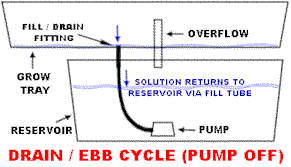Roseman
Elite Rolling Society
Preface,
Let me start by saying
I plan on posting much more than just a grow journal here. I hope to share a very detailed tutorial here, with many pics, on growing a pound of dried, closely manicured indica buds in a closet. I will use a store bought hydroponic kit and also use a DIY 5 gallon bucket too.
I hope to explain every little thing I do in easy terms, simplified terms, precise details, with photos, and I am dedicating this thread to all the newbies that really want to learn and do not mind reading.
If you want to help and contribute, especially the experienced and knowlegable BubbleHead Gang, I welcome helpful advice. If I, for example, say HID, and forget to tell what HID means or stands for, or if I say CFL, and fail to tell what the letters CFL stands for, I would very much appreciate a heads up IN A PM OR ON A DIFFERENT THREAD. I welcome help. I do not welcome arguements, or "why don't you just blah, blah, blah".
Again, I want to say, I am trying to do this for the first time grower, the so-called newbie here. I will try and do everything the SIMPLE way, and NOT the EXPENSIVE High-Tech way a botanist or horticulturalist or a hydroponic scientist does it.
IN NO WAY AM I STATING THAT I AM DOING IT THE BEST WAY. Many more knowlegable growers are here that know a better way. I'll be showing a grow with CFLs, Compact Fluorescent Lights, but I am not saying that is BEST. I AM saying it is better for the first time grower on a limited budget, who can not afford to handle the HEAT of hotter lights and does not have access to a Hydro store or ordering from the Internet. Everything I show here, you can get from Walmart, Lowes, HomeDepot, PetSmart, Targets, and the local hardware store.
And I will not appreciate rude criticism, and I will not respond to it.
I 'll be off to a slow start here. I don't rush into anything.
Wish me luck and try to be helpful.
IF you are a "know it all, better than you" sort of person, this is not the thread for you.
I'll be uploading pics for a while now.
QUESTIONS will be answered here:
Questions about Bubbleponic Growing Thread
.
PLEASE DO NOT HI-JACK THIS TUTORIAL.
PLEASE DO NOT POST YOUR GROW HERE.
PLEASE DO NOT USE MY THREAD AS A CHAT ROOM FOR YOUR OFF TOPIC DISCUSSIONS.
Let me start by saying
I plan on posting much more than just a grow journal here. I hope to share a very detailed tutorial here, with many pics, on growing a pound of dried, closely manicured indica buds in a closet. I will use a store bought hydroponic kit and also use a DIY 5 gallon bucket too.
I hope to explain every little thing I do in easy terms, simplified terms, precise details, with photos, and I am dedicating this thread to all the newbies that really want to learn and do not mind reading.
If you want to help and contribute, especially the experienced and knowlegable BubbleHead Gang, I welcome helpful advice. If I, for example, say HID, and forget to tell what HID means or stands for, or if I say CFL, and fail to tell what the letters CFL stands for, I would very much appreciate a heads up IN A PM OR ON A DIFFERENT THREAD. I welcome help. I do not welcome arguements, or "why don't you just blah, blah, blah".
Again, I want to say, I am trying to do this for the first time grower, the so-called newbie here. I will try and do everything the SIMPLE way, and NOT the EXPENSIVE High-Tech way a botanist or horticulturalist or a hydroponic scientist does it.
IN NO WAY AM I STATING THAT I AM DOING IT THE BEST WAY. Many more knowlegable growers are here that know a better way. I'll be showing a grow with CFLs, Compact Fluorescent Lights, but I am not saying that is BEST. I AM saying it is better for the first time grower on a limited budget, who can not afford to handle the HEAT of hotter lights and does not have access to a Hydro store or ordering from the Internet. Everything I show here, you can get from Walmart, Lowes, HomeDepot, PetSmart, Targets, and the local hardware store.
And I will not appreciate rude criticism, and I will not respond to it.
I 'll be off to a slow start here. I don't rush into anything.
Wish me luck and try to be helpful.
IF you are a "know it all, better than you" sort of person, this is not the thread for you.
I'll be uploading pics for a while now.
QUESTIONS will be answered here:
Questions about Bubbleponic Growing Thread
.
PLEASE DO NOT HI-JACK THIS TUTORIAL.
PLEASE DO NOT POST YOUR GROW HERE.
PLEASE DO NOT USE MY THREAD AS A CHAT ROOM FOR YOUR OFF TOPIC DISCUSSIONS.










































































